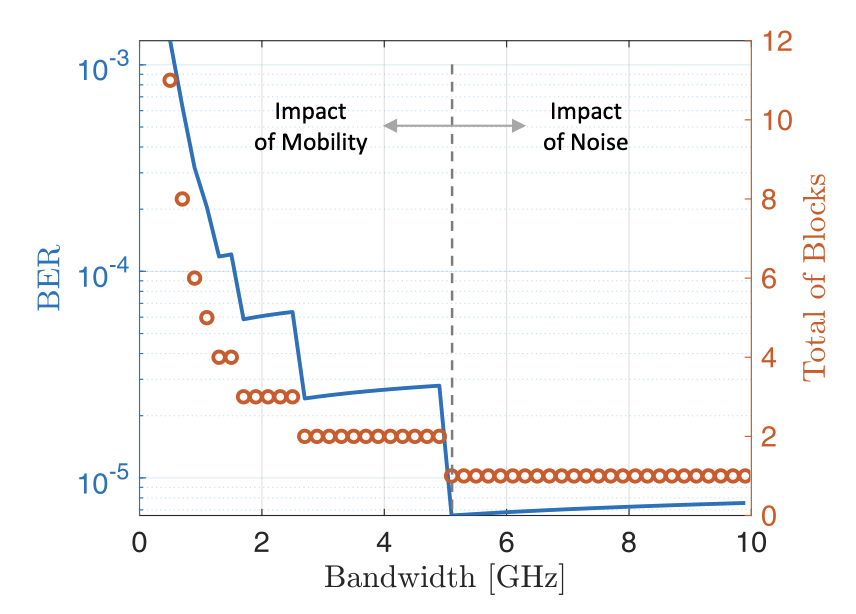Personal website of
Prof. Dr.-Ing. habil. Falko Dressler
Advances in Biologically Inspired Information Systems: Models, Methods, and Tools
Reference

Preface
-
Technology is taking us to a world where myriads of heavily networked devices
interact with the physical world in multiple ways, and at multiple scales, from the
global Internet scale down to micro and nano devices. Many of these devices are
highly mobile and autonomous, and must adapt to the surrounding environment in a
totally unsupervised way.
- Self-Organizing Network Environments
- System Design and Programming
- Sensor and Actor Networks
- Search and Optimization
This vision poses severe challenges to existing approaches to the design and management of ICT systems, since the size of this omni-comprehensive network, in terms of both number of constituent nodes and running services, is expected to exceed by several orders of magnitude that of existing information systems. The resulting largescale communication system could not be handled according to conventional ICT paradigms, which are not able to accommodate the scale, heterogeneity and complexity of such scenarios. A fundamental research challenge is therefore the design of robust decentralized computing systems capable of operating under changing environments and noisy input, and yet exhibit the desired behavior and response time, under constraints such as energy consumption, size, and processing power. These systems should be able to adapt on the short term and evolve on the long one, and they should learn how to react to unforeseen scenarios as well as to display properties comparable to social entities.
Biological systems are able to handle many of these challenges with an elegance and efficiency still far beyond current human artifacts. Most of the desired features have been refined by nature over periods of millions of years, generating living organisms that are able to autonomously repair themselves when damaged, produce emergent behavior, survive despite drastic changes in the environment conditions and evolve over time. All these considerations generated a significant interest in the area of bio-inspired computing, i.e. the application of biological principles to the design of human artifacts, with the expectation of reproducing the same observed behavior.
Fully in line with this growing interests in biologically inspired computing, the first international conference on Bio Inspired mOdels of NEtwork, Information and Computing Systems (BIONETICS) was successfully organized in Cavalese in December 2006. The aim was to bring together researchers and scientists from several disciplines in computer science and engineering where bio-inspired methods are investigated. The interest in this new research approach has been confirmed by the high number of high quality submissions, and from the high number of conference attendees.
This book collects extended versions of selected outstanding papers originally submitted to BIONETICS 2006. It is structured into four parts, covering different aspects involved in the engineering of future ICT systems:
Erlangen and Trento, March 2007
Falko Dressler and Iacopo Carreras
Table of contents
-
Part I Self-Organizing Network Environments
- Sasitharan Balasubramaniam, Dmitri Botvich, William Donnelly, Mícheál Ó Foghlú, and John Strassner, "Bio-inspired Framework for Autonomic Communication Systems," in Advances in Biologically Inspired Information Systems - Models, Methods, and Tools, Studies in Computational Intelligence (SCI), vol. 69, Falko Dressler and Iacopo Carreras, Eds. Berlin, Heidelberg, New York: Springer, 2007, pp. 3-20.
- Chonho Lee, Hiroshi Wada, and Junichi Suzuki, "Towards a Biologically-inspired Architecture for Self-Regulatory and Evolvable Network Applications," in Advances in Biologically Inspired Information Systems - Models, Methods, and Tools, Studies in Computational Intelligence (SCI), vol. 69, Falko Dressler and Iacopo Carreras, Eds. Berlin, Heidelberg, New York: Springer, 2007, pp. 21-46.
- Alexander Tyrrell, Gunther Auer, and Christian Bettstetter, "Biologically Inspired Synchronization forWireless Networks," in Advances in Biologically Inspired Information Systems - Models, Methods, and Tools, Studies in Computational Intelligence (SCI), vol. 69, Falko Dressler and Iacopo Carreras, Eds. Berlin, Heidelberg, New York: Springer, 2007, pp. 47-62.
- Morteza Analoui and Shahram Jamali, "Bio-Inspired Congestion Control: Conceptual Framework, Algorithm and Discussion," in Advances in Biologically Inspired Information Systems - Models, Methods, and Tools, Studies in Computational Intelligence (SCI), vol. 69, Falko Dressler and Iacopo Carreras, Eds. Berlin, Heidelberg, New York: Springer, 2007, pp. 63-80.
- Falko Dressler, "Self-Organized Network Security Facilities based on Bio-inspired Promoters and Inhibitors," in Advances in Biologically Inspired Information Systems - Models, Methods, and Tools, Studies in Computational Intelligence (SCI), vol. 69, Falko Dressler and Iacopo Carreras, Eds. Berlin, Heidelberg, New York: Springer, 2007, pp. 81-98.
Part II System Design and Programming
- Carsten Jacob, David Linner, Heiko Pfeffer, Ilja Radusch, and Stephan Steglich, "Context Data Dissemination in the Bio-inspired Service Life Cycle," in Advances in Biologically Inspired Information Systems - Models, Methods, and Tools, Studies in Computational Intelligence (SCI), vol. 69, Falko Dressler and Iacopo Carreras, Eds. Berlin, Heidelberg, New York: Springer, 2007, pp. 101-122.
- Iacopo Carreras, Daniele Miorandi, Geoffrey S. Canright, and Kenth Engø-Monsen, "Eigenvector Centrality in Highly Partitioned Mobile Networks: Principles and Applications," in Advances in Biologically Inspired Information Systems - Models, Methods, and Tools, Studies in Computational Intelligence (SCI), vol. 69, Falko Dressler and Iacopo Carreras, Eds. Berlin, Heidelberg, New York: Springer, 2007, pp. 123-146.
- Naoki Matsumaru, Thorsten Lenser, Thomas Hinze, and Peter Dittrich, "Toward Organization-Oriented Chemical Programming: A Case Study with the Maximal Independent Set Problem," in Advances in Biologically Inspired Information Systems - Models, Methods, and Tools, Studies in Computational Intelligence (SCI), vol. 69, Falko Dressler and Iacopo Carreras, Eds. Berlin, Heidelberg, New York: Springer, 2007, pp. 147-164.
- James Decraene, George G. Mitchell, and Barry McMullin, "Evolving Artificial Cell Signaling Networks: Perspectives and Methods," in Advances in Biologically Inspired Information Systems - Models, Methods, and Tools, Studies in Computational Intelligence (SCI), vol. 69, Falko Dressler and Iacopo Carreras, Eds. Berlin, Heidelberg, New York: Springer, 2007, pp. 165-184.
Part III Sensor and Actor Networks
- Baris Atakan and Özgür B. Akan, "Immune System-based Energy Efficient and Reliable Communication inWireless Sensor Networks," in Advances in Biologically Inspired Information Systems - Models, Methods, and Tools, Studies in Computational Intelligence (SCI), vol. 69, Falko Dressler and Iacopo Carreras, Eds. Berlin, Heidelberg, New York: Springer, 2007, pp. 187-208.
- Thomas Halva Labella and Falko Dressler, "A Bio-Inspired Architecture for Division of Labour in SANETs," in Advances in Biologically Inspired Information Systems - Models, Methods, and Tools, Studies in Computational Intelligence (SCI), vol. 69, Falko Dressler and Iacopo Carreras, Eds. Berlin, Heidelberg, New York: Springer, 2007, pp. 209-228.
- Sorin M. Iacob, Johan de Heer, and Alfons H. Salden, "A Pragmatic Model of Attention and Anticipation for Active Sensor Systems," in Advances in Biologically Inspired Information Systems - Models, Methods, and Tools, Studies in Computational Intelligence (SCI), vol. 69, Falko Dressler and Iacopo Carreras, Eds. Berlin, Heidelberg, New York: Springer, 2007, pp. 229-244.
Part IV Search and Optimization
- Elke Michlmayr, "Self-Organization for Search in Peer-to-Peer Networks," in Advances in Biologically Inspired Information Systems - Models, Methods, and Tools, Studies in Computational Intelligence (SCI), vol. 69, Falko Dressler and Iacopo Carreras, Eds. Berlin, Heidelberg, New York: Springer, 2007, pp. 247-266.
- Sachin Kulkarni, Niloy Ganguly, Geoffrey Canright, and Andreas Deutsch, "A Bio-Inspired Location Search Algorithm for Peer to Peer Networks," in Advances in Biologically Inspired Information Systems - Models, Methods, and Tools, Studies in Computational Intelligence (SCI), vol. 69, Falko Dressler and Iacopo Carreras, Eds. Berlin, Heidelberg, New York: Springer, 2007, pp. 267-282.
- Pedro C. Pinto, Thomas A. Runkler, and João M. C. Sousa, "Ant Colony Optimization and its Application to Regular and Dynamic MAX-SAT Problems," in Advances in Biologically Inspired Information Systems - Models, Methods, and Tools, Studies in Computational Intelligence (SCI), vol. 69, Falko Dressler and Iacopo Carreras, Eds. Berlin, Heidelberg, New York: Springer, 2007, pp. 283-302.


